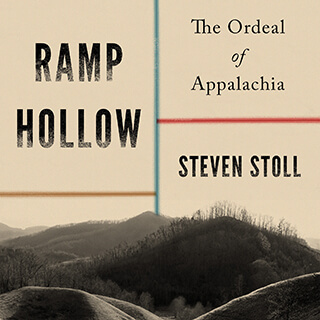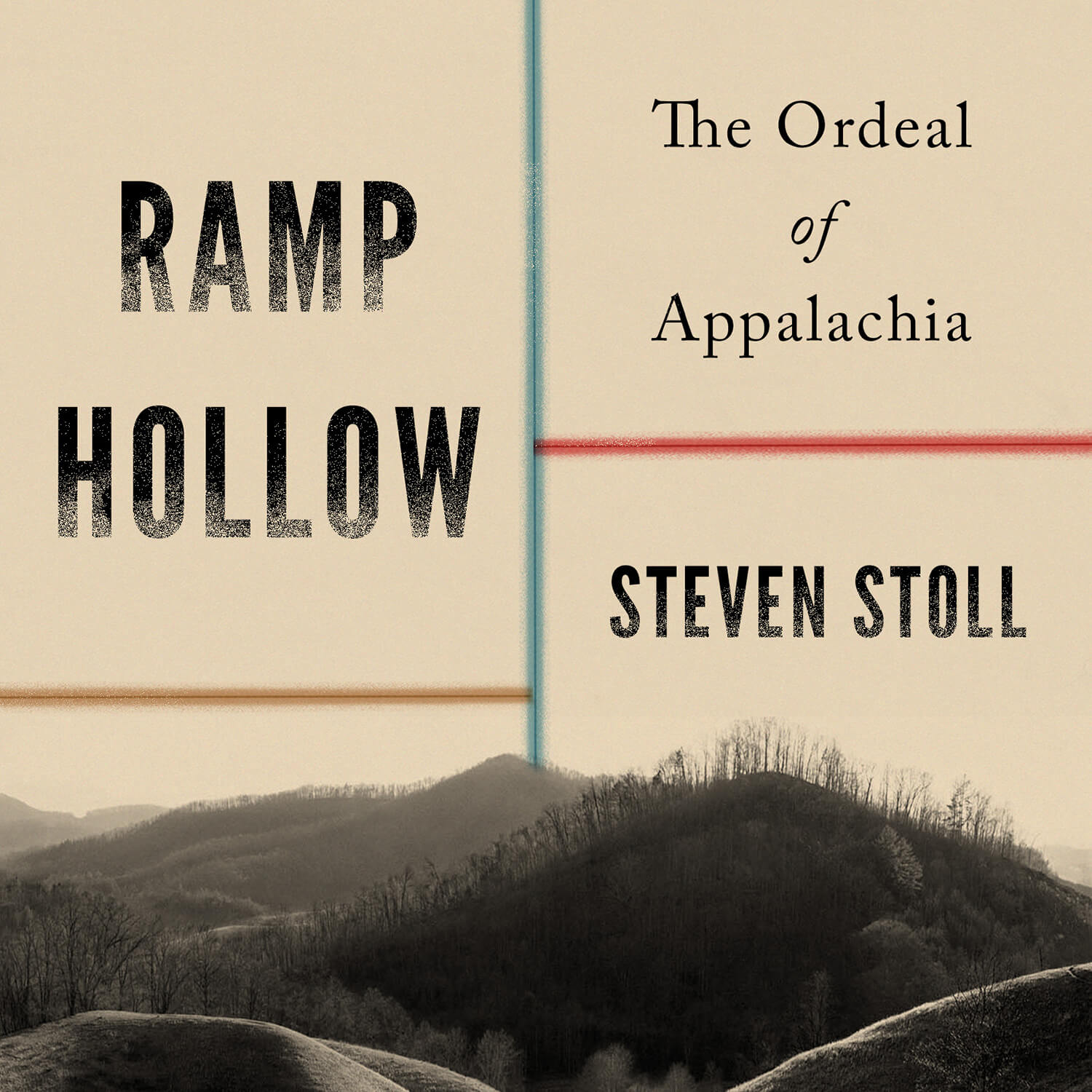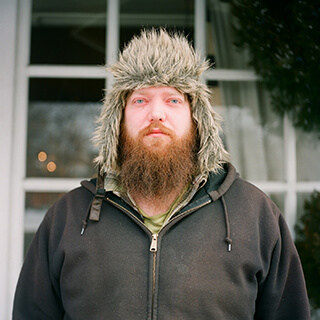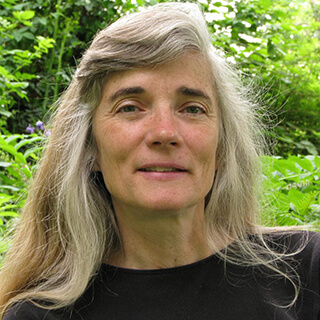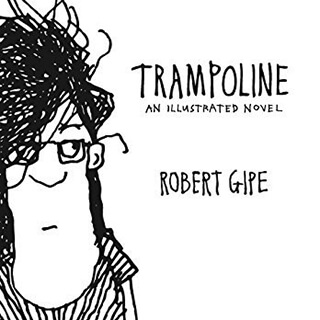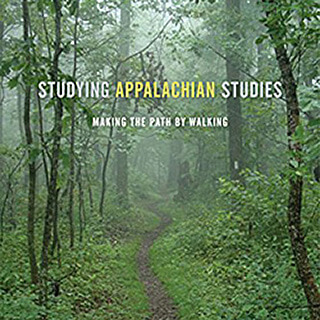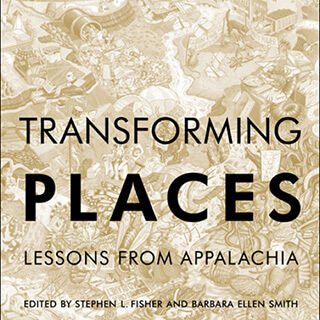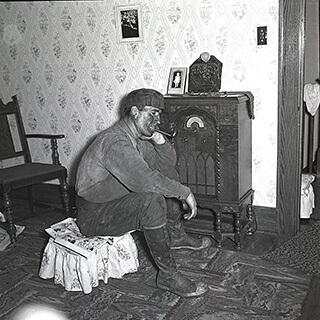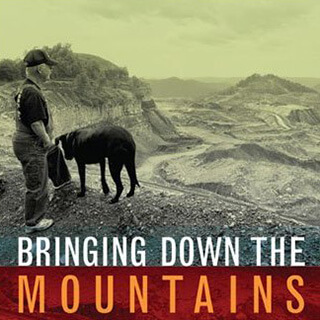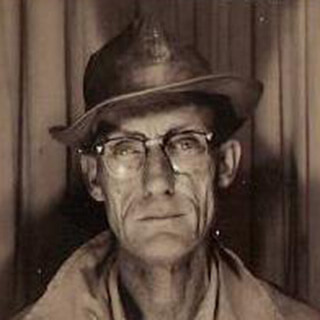Overview
Katherine Ledford and Theresa Lloyd introduce Writing Appalachia, an anthology of Appalachian literature concerned with "simultaneously representing, complicating, and furthering the discourse on the Appalachian region and its cultures."
Excerpted from Writing Appalachia: An Anthology (University Press of Kentucky, 2020). Published with permission by the University Press of Kentucky.
Excerpt

Appalachian literature is thriving. From the earliest oral traditions to print accounts of frontier exploration, from local color to modernism and postmodernism, from an exuberant flowering in the 1970s to its high popular and critical profile in the twenty-first century, Appalachian literature can boast a long tradition of delighting and provoking readers. Yet as anyone who enjoys reading or teaching this literature knows, finding an anthology that offers a representative selection of authors and texts from the earliest days to the present can be difficult. What you are now holding in your hands, or accessing through an electronic device, is the result of our efforts to assemble that book.
We are especially aware of the need to have a representative selection of Appalachian texts in one book because we teach Appalachian literature and have wished for such a book. The problem is not that the region's literature isn't available. Poems, short stories, and novels are available electronically from a myriad of websites; however, even today's computer-savvy readers and students can flounder when the material they seek is scattered to the four quarters of the internet.1Websites for locating Appalachian writing include Documenting the American South (docsouth.unc.edu) and Making of America (quod.lib.umich.edu/m/moagrp/). Additionally, many specialized anthologies of Appalachian literature have appeared over the past few decades. Yet by their very nature, specialized anthologies cannot cover the full sweep of Appalachian literature and must be supplemented by other readings.2Outstanding specialized anthologies include W. K. McNeil, ed., Appalachian Images in Folk and Popular Culture (1995); Sandra L. Ballard and Patricia L Hudson, eds., Listen Here: Women Writing in Appalachia (2004); Felicia Mitchell, ed., Her Word: Diverse Voices in Contemporary Appalachian Women's Poetry (2003); Kevin E. O'Donnell and Helen Hollingsworth, eds., Seekers of Scenery: Travel Writing from Southern Appalachia, 1840–1900 (2004); Marita Garin, ed., Southern Appalachian Poetry: An Anthology of Works by Thirty-Seven Poets (2008); Jessie Graves and William Wright, eds., The Southern Poetry Anthology: Contemporary Appalachia (2010); Chris Green, ed., Coal: A Poetry Anthology (2006); and Anthology of Appalachian Writers (a journal-like, serial publication of contemporary Appalachian writing published by Shepherd University).

Good older anthologies of Appalachian literature exist. Robert J. Higgs and Ambrose Manning's Voices from the Hills: Selected Readings of Southern Appalachia (1975) was an important, groundbreaking work that provided an excellent selection of Appalachian writings in one volume. But by the mid-1990s, changing ideas about Appalachia and literary theory, along with the remarkable number of fine authors whose works had appeared since the book's publication, made that collection feel incomplete. Aware of those gaps, Higgs and Manning, along with scholar and poet Jim Wayne Miller, published a two-volume sequel, Appalachia Inside Out, in 1995.
But to date, no one collection provides the historical depth and range of Appalachian literature, from Cherokee oral narratives to fiction and drama about mountaintop removal and prescription drug abuse, that contemporary readers and scholars seek. What is really needed, we feel, is a one-volume anthology of Appalachian literature that is comprehensive, reflects contemporary ideas about authorship and Appalachia, and brings readers well into the twenty-first century. That is what this book attempts to do.
In creating this anthology, we had a twofold task. Like all anthologists, we had to decide what principles would govern our selection of authors and, given those principles, what authors and texts we should include. But even before wrestling with those difficult decisions, we faced the conundrum that anyone working on our region confronts: just what do we mean when we say "Appalachia"? Geographically and conceptually, debate over this question runs high.

Merely determining the territory encompassed by the term "Appalachia" has been a matter of contention. Geographers' maps delineating the physiographic province of Appalachia, for example, outline a region stretching from central Alabama and Georgia northeast to the Atlantic Ocean off the coast of Labrador, and from the Piedmont through the western rim of the Cumberland Plateau as far as Ohio. However, late nineteenth- and early twentieth-century attempts to trace the region's boundaries, such as the map included in John C. Campbell's The Southern Highlander and His Homeland (1921), place the region within the borders of the slaveholding South with the Mason-Dixon Line demarcating the northern border, the Ohio and Mississippi Rivers marking off the western border, and elevation (the Blue Ridge) delimiting the eastern. The Appalachian Regional Commission's 1965 and subsequent maps of the region, guided by political and economic forces at play in the War on Poverty years, identify an area that incorporates portions of thirteen states, from the southern-tier counties of western New York to central Alabama and northeastern Mississippi, including significant parts of Ohio and a small chunk of the northwest South Carolina Piedmont. In sharp contrast to all of the above, folklorists and cultural geographers such as Henry Glassie and Terry Jordan-Bychkov insist that culturally, Southern and Central Appalachia are part of the Upland South, which runs from the eastern Piedmont of Virginia and the Carolinas west through Tennessee and Kentucky to include the Ozarks (Jordan-Bychkov argues that shared cultural traits extend the Upland South through East Texas); Northern Appalachia, they assert, is part of the mid-Atlantic and midwestern cultural regions.3 John C. Campbell, The Southern Highlander and His Homeland (1921); Henry Glassie, Pattern in the Material Folk Culture of the Eastern United States (1968); Terry G. Jordan-Bychkov, The Upland South: The Making of an American Folk Region and Landscape (2003).
As with maps, the popular conception of the region has also been subject to vicissitudes and controversy. Prior to the mid-nineteenth century, the southern mountains were viewed as just that: southern, with a high elevation and a whiff of the backwater. Since the southern backwater had once lain as far east as the coastal plain, frontier rustication was not yet synonymous with mountain. Yet beginning in the mid-nineteenth century and flowering fully in the post–Civil War era, fueled by an enormous body of writing in the popular press, Appalachia became known as a land apart, home to what William Goodell Frost, president of Berea College, identified in 1899 as America's "contemporary ancestors." These curious creatures were alternately viewed either as a genetic and cultural reservoir of America's best (noble poor rural white people of northern European ancestry who spoke Elizabethan English and lived a lifestyle like that of the colonial era), or as a sad example of America's worst (degenerate poor rural white moonshiners and feudists who spoke substandard English).4William Goodell Frost, "Our Contemporary Ancestors in the Southern Mountains," Atlantic Monthly, 1899. A recent controversial literary example that reinforces the degenerate-culture vision of Appalachia is J. D. Vance's Hillbilly Elegy: A Memoir of a Family and Culture in Crisis (2016). Vance's book has generated so much popular attention on the region that several Appalachian authors, including many of the authors featured in this anthology, decided to write back against Vance's portrayal of Appalachia in Appalachian Reckoning: A Region Responds to "Hillbilly Elegy" (2018). Examples of the degenerate-culture representation in the contemporary media include The Wild and Wonderful Whites of West Virginia (https://www.youtube.com/watch?v=AQBiXDNVeSA); Buckwild (http://www.mtv.com/shows/ buckwild/series.jhtml), Squidbillies (https://www.adultswim.com/search?q=squidbillies), and Saturday Night Live's "Appalachian Emergency Room" (http://www.nbc.com/saturday-night-live/video/appalachian-emergency-room/n12005/). Distorted though they may be, those two views of Appalachia are still present in the popular imagination, as best-seller lists and television shows indicate.5The contemporary popular media engage less in romanticization of Appalachians, although the trope abounds in the literature. Nothing seems to be filling the beloved shoes of The Waltons (serialized from 1972 to 1981 and made into television movies three times in the 1990s) or Christy, the 1994–1995 television series about a stoic young city girl teaching in the Tennessee mountains in 1912 who gently guides the mountain people away from their bad ways, bringing out their natural goodness. The character Kenneth Parcel, played by Jack McBrayer, on the television comedy 30 Rock (2006–2013) may be the best example of contemporary media's embracing of the "good" qualities of Appalachian people, albeit couched within the all-too-familiar hillbilly stereotypes. Kenneth, from Stone Mountain, Georgia, is unfailingly cheerful, kind, and honest. He is also misogynistic and religiously narrow-minded. He rejects science and supports the Confederacy. References to incest abound when Kenneth is around.

That dichotomy—the romanticized and the degenerate—remained operative through the better part of the twentieth century, with few attempts at complicating it. (Horace Kephart, John C. Campbell, and Harry Caudill are notable exceptions.) Then, in the 1970s, under the influence of the civil rights movement and similar ideological initiatives among women, Native Americans, and other marginalized groups, Appalachian residents, together with activists and scholars, developed an Appalachian studies movement to challenge this distorted image of Appalachia and provide an accurate account of the region's history and contemporary situation.6Chad Berry, Philip J. Obermiller, and Shaunna L. Scott, eds, Studying Appalachian Studies: Making the Path by Walking (2015). This effort has produced outstanding writing, although in some quarters there has remained a tendency to continue romanticizing the region as a haven for old-time living and, as Ronald D. Eller notes, "A flourishing minor industry has developed to fabricate such oddities as dulcimers, quilts, log cabins, and 'Hillbilly Chicken.'"7Eller, Miners, Millhands, and Mountaineers: Industrialization of the Appalachian South, 1880–1930 (1982), xvii. For a discussion of the commodification and fetishization of Appalachia, see Allen W. Batteau, The Invention of Appalachia (1990). Some of the best statements on the conflicting narratives comprising the "invention" of Appalachia appear, of course, in the literature of the region and the scholarship on that literature.8Batteau, The Invention of Appalachia. See also Henry Shapiro, Appalachia on Our Mind: The Southern Mountains and Mountaineers in the American Consciousness, 1870–1920 (1978).
In navigating these turbulent waters, we also had to ask ourselves what story of the region we wanted to tell. In answering this question, we were influenced by current ideas about anthologies and the literary canon. Whereas most early- to mid-twentieth-century American anthologies attempted to produce a master narrative—a collection of canonical authors whose work and biographies support one particular vision of the nation, region, or group represented—contemporary critical theory's expanded ideas of authorship have challenged that approach, which tends to exclude writers who fail to conform to the master narrative, such as women or ethnic minorities.9For a discussion of master narratives in late nineteenth- and early twentieth-century anthologies of southern literature, see Susan Harrell Irons, "Southern Literary Reconstructionists: Shaping Southern Literary Identity, 1895–1915" (Ph.D diss., University of North Carolina, Chapel Hill, 2001). Hence, anthologists today (ourselves included) tend to view their collections as dialogues or debates among sometimes conflicting voices.10William Andrews, preface to The Literature of the American South: A Norton Anthology (1998), xxii.
Indeed, in Appalachia, as in other regions, the culture, like the geographic configuration, can be seen as porous—that is, the boundaries are constantly changing. The result is that no one can definitively say what Appalachia is or is not, even though almost everyone seems to try. As Douglas Reichert Powell observes, "Regions are not so much places themselves but ways of describing relationships among places. These descriptions serve particular purposes for the people doing the describing."11Douglas Reichert Powell, Critical Regionalism: Connecting Politics and Culture in the American Landscape (2007), 10. It is precisely this unsettled definition and the controversies it continues to inspire that is the story we wish to tell in this anthology. Appalachia is complicated, and this rich complexity is worth celebrating and studying.

What is the traditional master narrative of Appalachian literature and scholarship? Higgs and Manning summarize it succinctly: "the mountaineer, [and] his struggles with himself, nature, and the outside world."12Robert J. Higgs and Ambrose Manning, Voices from the Hills: Selected Readings of Southern Appalachia (1975), xvii. While it is undeniably true that this story of the (white male) mountaineer has been important throughout the region (and is represented in this anthology), many other stories have existed as well, and we do not want to leave them out—to perpetuate what Edward Cabbell calls black "invisibility" in Appalachia, for example, or to relegate women to "walk-ons in the third act," as Barbara Ellen Smith characterizes the region's historiography, or to deny the experiences of LGBTQ Appalachians.13Edward J. Cabbell, "Black Invisibility and Racism in Appalachia: An Informal Survey," in Blacks in Appalachia, ed. William H. Turner and Edward J. Cabbell (1985); Barbara Ellen Smith, "Walk-Ons in the Third Act: The Role of Women in Appalachian Historiography," Journal of Appalachian Studies (1998); Jeff Mann, Loving Mountains, Loving Men (2005). Hence, diverse voices of gender, sexuality, ethnicity, and race speak throughout this anthology through authors such as Elias Boudinot, Frank X Walker, August Wilson, Dorothy Allison, Jeff Mann, and Blake Hausman.


In addition to correcting the obvious omission of a multitude of voices from the traditional Appalachian master narrative, we wanted to avoid miring this anthology in what Theresa Lloyd calls "mama and biscuits literature"—texts that for good or ill stereotype Appalachia as a land of simple agrarian folklife. Not that we fail to represent regional folklore—those looking for it will be pleased to find Jack tales, traditional songs, snake lore, and a great deal more. But along with an important agrarian heritage, our region has long had an urban and suburban dimension. Art historian Betsy White, for example, has demonstrated the presence of a thriving fine arts tradition fully reflective of international trends in western Virginia and East Tennessee towns along the Great Road, a heavily traveled trade route running along the contemporary I-81 corridor from Pennsylvania to Southern Appalachia.14Betsy K. White, Great Road Style: The Decorative Arts Legacy of Southwest Virginia and Northeast Tennessee (2006). In 1858, (West) Virginia artist and author David Hunter Strother confirmed this blend of backwoods and urbane, noting that in East Tennessee one could find both "the prints of the deer-skin moccasin and the French kid slipper," or "the mud-chinked cabin of the pioneer" beside "the elegant villa from a design by Downing or Vaux."15Strother, "A Winter in the South, Fifth Paper," Harper's New Monthly Magazine (1858), 721. In the twentieth and twenty-first centuries, the region has felt the full effects of industrialization, modern transportation, consumerism, migration, the centralization of American agricultural production in agribusiness enterprises outside the region, suburbanization, the global connections of the internet, and the multiple genres of electronic media. These forces have virtually obliterated traditional agrarian Appalachia, although an interest in local foods in the region, part and parcel of a larger local foods movement in the United States, is fueling a return to home gardening and small-scale, specialized farming. This anthology includes not only the canonical texts that have constructed the idea of Appalachia as a rural, isolated folk society—such as work by Jesse Stuart and James Still—but also writings that challenge that stereotype by portraying the region as urban or suburban, and as fully engaged with the social, intellectual, economic, and political world beyond the mountains—as in texts by Thomas Wolfe, Lisa Alther, Jayne Anne Phillips, and many others.16Rudy Abramson and Jean Haskell, eds., The Encyclopedia of Appalachia (2006), which emphasized the region's urban as well as rural dimensions, pioneered this multi-tiered approach to Appalachian studies. We follow this lead.
One non-agrarian facet of the Appalachian experience that has been fully documented in its literature is the effects of the extractive and manufacturing industries, such as coal and textiles. This anthology tells that story through both conventional and more radical texts. Represented are genres and authors such as fiction by Rebecca Harding Davis, Thomas Bell, and Denise Giardina; poetry by Don West, Irene McKinney, and Ron Rash; nonfiction by Mary Harris "Mother" Jones and Harry Caudill; protest songs by Aunt Molly Jackson and Ella May Wiggins; and a strike narrative collected from "Bloody" Harlan County in the 1930s.

Another story that we felt was important to tell was that of the Appalachian environment. Nowhere is human stewardship of the environment more pressing than in the region's coalfields, where people and nature suffer the effects of mining and mountaintop removal, as articulated here by Ann Pancake, Robert Gipe, and Wendell Berry. Yet nowhere more than in our mountains is the possibility of an intimate human-nature relationship as obvious, as witnessed by the writing of Harvey Broome, Harry Middleton, Marilou Awiakta, and bell hooks, among others. Presenting a new vision of agrarianism, Barbara Kingsolver argues the importance of local farming for Appalachia's people and environment, as Sandor Katz and Shannon Hayes encourage readers to relearn homemaking and fermentation skills as a form of activism.

Having explored the stories of Appalachia that we wanted this anthology to tell, we still faced a vexatious problem: who would get to tell those stories? That is, just who is an Appalachian author? The simple answer would be writers born in the region who write about regional topics—for example, Mildred Haun, Harriette Arnow, Wilma Dykeman, Robert Morgan, Fred Chappell, Lee Smith, Harry Caudill, and Jo Carson. However, that definition would have forced us to leave out important writings about the region by authors not born here, such as William Bartram, George Washington Harris, Mary Noailles Murfree, Horace Kephart, and others. It could also have led us to omit significant authors born here but whose writings are not obviously regional, such as Charles Wright. Ultimately, we decided to follow the lead of the Appalachian Writers Association in defining Appalachian authors: writers who were born in the region, adopted the region, or wrote about a significant experience in the region.
Nonetheless, decisions about whom to include were hard to make. We wanted to satisfy expectations by including authors who have a following among the region's readers and scholars, but we also wanted to break new ground by introducing authors who had been marginalized or ignored in the discourse of Appalachian literature. Furthermore, especially since the 1970s, that era of literary outpouring that some scholars identify as the Appalachian Renaissance, so many outstanding authors have been publishing that we were forced to omit many worthy candidates. (Our publisher wisely insisted that we keep the book to one reasonably sized volume.) We know that readers will lament the absence of one favorite author or another, but we hope that our suggestion of the range of Appalachian literature is broad enough to accommodate the region's multitudinous stories. We rely on the excellent specialized anthologies of Appalachian writing to flesh out the stories for those readers who seek more.
Another way that we wanted to break new ground was by including authors from Northern Appalachia. We acknowledge that there are strong arguments for not doing so and for focusing instead on what John Alexander Williams calls "core" Appalachia—that is, the southern mountains as defined by Campbell and others.17John Alexander Williams, Appalachia: A History (2002), 13. Aside from the precedent set by previous anthologies and collections of scholarship, along with the southern-focused expectations of readers who encounter the word "Appalachia," it is in writings from the southern highlands that one finds the "shared themes and narrated stances, . . . [the] repeated and revised tropes" that, according to Henry Louis Gates, are the hallmark of a literary movement.18Henry Louis Gates Jr., The Signifying Monkey: A Theory of African-American Literary Criticism (1988), 127. But as Katherine Ledford notes, incorporating Northern Appalachian authors invites us to engage in comparative regional studies—for example, to examine the concept of the American frontier in the writings of New Yorker James Fenimore Cooper as well as in the southern account of Anne Newport Royall, or to study the effects of extractive industrial economies in Jason Miller's Pennsylvania and Harry Caudill's Kentucky.

Scholars of the South may wonder how we distinguish Appalachian literature from its non-montane cousins of the Upland South. Hugh Holman raised the question in his 1976 review of Voices from the Hills, and it still has relevance.19C. Hugh Holman, "Appalachian Literature? Two Views," Appalachian Journal (1976), 79. There are, for example, obvious similarities between the poor mountain whites of Murfree and Fox, and their counterparts in the work of lowland southern authors Caldwell and O'Connor, who are not included in this Appalachian anthology.20See, for example, Sylvia Jenkins Cook, From Tobacco Road to Route 66: The Southern Poor White in Fiction (1976). But southern literary studies have tended to give short shrift to Appalachian authors, as Fred Chappell and Rodger Cunningham have noted, making the need for Appalachian literary studies of continuing relevance.21Fred Chappell, "The Shape of Southern Literature to Come: An Interview with Will Hickson"; and Rodger Cunningham, "Writing on the Cusp: Double Alterity and Minority Discourse in Appalachia," in The Future of Southern Letters, ed. Jefferson Humphries and John Lowe (1996). Even more important is the obvious fact of a demonstrable, self-conscious literary tradition in the southern highlands.
As for the genres we have included, they range from the traditional belles-lettres—fiction, poetry, and drama—to nonfiction, diaries, interviews, song lyrics, and oral literature. We have a preference for complete units—for example, short stories over selections from novels, essays over portions of nonfiction books or, when we simply could not ignore an important book, whole chapters or excerpts that provide a sense of completeness.
The difficulties of acquiring copyright permissions, the bane of the anthologist, vexed us as well. We had to make some hard choices when permissions trails went cold or when manageable deals could not be struck with copyright holders. Some writing we wished to include was off-limits to us due to copyright restrictions increasingly imposed by large commercial publishing houses. Within these restrictions, we have tried to construct an anthology that covers much ground and does so in a representative manner. We acknowledge that this anthology is only the beginning of the Appalachian story, and we encourage readers and instructors to supplement this anthology with a complete long work such as a novel or a collection of short stories or poems for a more sustained experience with an author and her or his craft.

As our story of creating this anthology suggests, we have been concerned with simultaneously representing, complicating, and furthering the discourse on the Appalachian region and its cultures. The complexity that we have struggled to understand and represent here speaks to the undeniable value of regional studies. Particularly since the rise of critical theory in the 1990s, some scholars have brushed off regional studies as a type of soft scholarship, inferior to studies of race, class, gender, sexuality, or the environment. The richness represented in these pages reveals that this assumption is simply not true.
This, then, is the vision of Appalachia and its literature represented in our anthology. Mountain and valley, rural and urban, folkloric and postmodern, traditional and au courant, northern and southern, white people and people of color, straight and gay, insiders and outsiders, sinners and saints—the dualisms multiply, endlessly and excitingly, and maybe, on some level, are not dualistic at all. 
About the Authors
Katherine Ledford is professor of Appalachian studies at Appalachian State University and coeditor of Back Talk from Appalachia: Confronting Stereotypes.
Theresa Lloyd is coeditor of the literature section of the Encyclopedia of Appalachia and professor emerita at East Tennessee State University.
Recommended Resources
Text
Ballard, Sandra L. and Patricia L. Hudson, eds. Listen Here: Women Writing in Appalachia. Lexington: University of Kentucky Press, 2004.
Berry, Chad, Phillip J. Obermiller, and Shaunna L. Scott, eds. Studying Appalachian Studies: Making the Path by Walking. Champaign: University of Illinois Press, 2015.
Brown, Karida L. Gone Home: Race and Roots through Appalachia. Chapel Hill: University of North Carolina Press, 2018.
Fisher, Stephen L. and Barbara Ellen Smith, eds. Transforming Places: Lessons from Appalachia. Champaign: University of Illinois Press, 2012.
Higgs, Robert J., Ambrose N. Manning, and Jim Wayne Miller, eds. Appalachia Inside Out: A Sequel to Voices from the Hills. 2 vols. Knoxville: University of Tennessee Press, 1995.
McLarney, Rose, Laura-Gray Street, and L.L. Gaddy, eds. A Literary Field Guild to Southern Appalachia. Athens: University of Georgia Press, 2019.
Stoll, Steven. Ramp Hollow: The Ordeal of Appalachia. New York: Hill and Wang, 2017.
Wilkerson, Jessica. To Live Here, You Have to Fight: How Women Led Appalachian Movements for Social Justice. Champaign: University of Illinois Press, 2019.
Williams, John Alexander. Appalachia: A History. Chapel Hill: University of North Carolina Press, 2002.
Wright, William, Jessie Graves and Paul Ruffin, eds. The Southern Poetry Anthology. Vol. 3, Contemporary Appalachia. Huntsville: Texas Review Press, 2010.
Web
Black in Appalachia. Accessed September 8, 2020. https://www.blackinappalachia.org.
Digital Library of Appalachia. Appalachian College Association. http://www.aca-dla.org/.
Looking at Appalachia. Directed by Roger May. Accessed September 8, 2020. https://lookingatappalachia.org.
Still: The Journal. Hillbilly Media. Accessed September 8, 2020. http://www.stilljournal.net.
Wilkey, Joshua. "Appalachia Reading List 2.0." This Appalachia Life. February 7, 2018. https://www.thisappalachialife.com/single-post/2017/07/05/An-Appalachia-Reading-List.
Similar Publications
| 1. | Websites for locating Appalachian writing include Documenting the American South (docsouth.unc.edu) and Making of America (quod.lib.umich.edu/m/moagrp/). |
|---|---|
| 2. | Outstanding specialized anthologies include W. K. McNeil, ed., Appalachian Images in Folk and Popular Culture (1995); Sandra L. Ballard and Patricia L Hudson, eds., Listen Here: Women Writing in Appalachia (2004); Felicia Mitchell, ed., Her Word: Diverse Voices in Contemporary Appalachian Women's Poetry (2003); Kevin E. O'Donnell and Helen Hollingsworth, eds., Seekers of Scenery: Travel Writing from Southern Appalachia, 1840–1900 (2004); Marita Garin, ed., Southern Appalachian Poetry: An Anthology of Works by Thirty-Seven Poets (2008); Jessie Graves and William Wright, eds., The Southern Poetry Anthology: Contemporary Appalachia (2010); Chris Green, ed., Coal: A Poetry Anthology (2006); and Anthology of Appalachian Writers (a journal-like, serial publication of contemporary Appalachian writing published by Shepherd University). |
| 3. | John C. Campbell, The Southern Highlander and His Homeland (1921); Henry Glassie, Pattern in the Material Folk Culture of the Eastern United States (1968); Terry G. Jordan-Bychkov, The Upland South: The Making of an American Folk Region and Landscape (2003). |
| 4. | William Goodell Frost, "Our Contemporary Ancestors in the Southern Mountains," Atlantic Monthly, 1899. A recent controversial literary example that reinforces the degenerate-culture vision of Appalachia is J. D. Vance's Hillbilly Elegy: A Memoir of a Family and Culture in Crisis (2016). Vance's book has generated so much popular attention on the region that several Appalachian authors, including many of the authors featured in this anthology, decided to write back against Vance's portrayal of Appalachia in Appalachian Reckoning: A Region Responds to "Hillbilly Elegy" (2018). Examples of the degenerate-culture representation in the contemporary media include The Wild and Wonderful Whites of West Virginia (https://www.youtube.com/watch?v=AQBiXDNVeSA); Buckwild (http://www.mtv.com/shows/ buckwild/series.jhtml), Squidbillies (https://www.adultswim.com/search?q=squidbillies), and Saturday Night Live's "Appalachian Emergency Room" (http://www.nbc.com/saturday-night-live/video/appalachian-emergency-room/n12005/). |
| 5. | The contemporary popular media engage less in romanticization of Appalachians, although the trope abounds in the literature. Nothing seems to be filling the beloved shoes of The Waltons (serialized from 1972 to 1981 and made into television movies three times in the 1990s) or Christy, the 1994–1995 television series about a stoic young city girl teaching in the Tennessee mountains in 1912 who gently guides the mountain people away from their bad ways, bringing out their natural goodness. The character Kenneth Parcel, played by Jack McBrayer, on the television comedy 30 Rock (2006–2013) may be the best example of contemporary media's embracing of the "good" qualities of Appalachian people, albeit couched within the all-too-familiar hillbilly stereotypes. Kenneth, from Stone Mountain, Georgia, is unfailingly cheerful, kind, and honest. He is also misogynistic and religiously narrow-minded. He rejects science and supports the Confederacy. References to incest abound when Kenneth is around. |
| 6. | Chad Berry, Philip J. Obermiller, and Shaunna L. Scott, eds, Studying Appalachian Studies: Making the Path by Walking (2015). |
| 7. | Eller, Miners, Millhands, and Mountaineers: Industrialization of the Appalachian South, 1880–1930 (1982), xvii. For a discussion of the commodification and fetishization of Appalachia, see Allen W. Batteau, The Invention of Appalachia (1990). |
| 8. | Batteau, The Invention of Appalachia. See also Henry Shapiro, Appalachia on Our Mind: The Southern Mountains and Mountaineers in the American Consciousness, 1870–1920 (1978). |
| 9. | For a discussion of master narratives in late nineteenth- and early twentieth-century anthologies of southern literature, see Susan Harrell Irons, "Southern Literary Reconstructionists: Shaping Southern Literary Identity, 1895–1915" (Ph.D diss., University of North Carolina, Chapel Hill, 2001). |
| 10. | William Andrews, preface to The Literature of the American South: A Norton Anthology (1998), xxii. |
| 11. | Douglas Reichert Powell, Critical Regionalism: Connecting Politics and Culture in the American Landscape (2007), 10. |
| 12. | Robert J. Higgs and Ambrose Manning, Voices from the Hills: Selected Readings of Southern Appalachia (1975), xvii. |
| 13. | Edward J. Cabbell, "Black Invisibility and Racism in Appalachia: An Informal Survey," in Blacks in Appalachia, ed. William H. Turner and Edward J. Cabbell (1985); Barbara Ellen Smith, "Walk-Ons in the Third Act: The Role of Women in Appalachian Historiography," Journal of Appalachian Studies (1998); Jeff Mann, Loving Mountains, Loving Men (2005). |
| 14. | Betsy K. White, Great Road Style: The Decorative Arts Legacy of Southwest Virginia and Northeast Tennessee (2006). |
| 15. | Strother, "A Winter in the South, Fifth Paper," Harper's New Monthly Magazine (1858), 721. |
| 16. | Rudy Abramson and Jean Haskell, eds., The Encyclopedia of Appalachia (2006), which emphasized the region's urban as well as rural dimensions, pioneered this multi-tiered approach to Appalachian studies. We follow this lead. |
| 17. | John Alexander Williams, Appalachia: A History (2002), 13. |
| 18. | Henry Louis Gates Jr., The Signifying Monkey: A Theory of African-American Literary Criticism (1988), 127. |
| 19. | C. Hugh Holman, "Appalachian Literature? Two Views," Appalachian Journal (1976), 79. |
| 20. | See, for example, Sylvia Jenkins Cook, From Tobacco Road to Route 66: The Southern Poor White in Fiction (1976). |
| 21. | Fred Chappell, "The Shape of Southern Literature to Come: An Interview with Will Hickson"; and Rodger Cunningham, "Writing on the Cusp: Double Alterity and Minority Discourse in Appalachia," in The Future of Southern Letters, ed. Jefferson Humphries and John Lowe (1996). |


